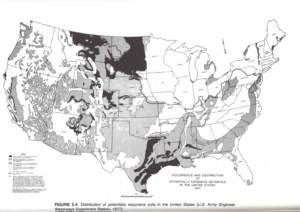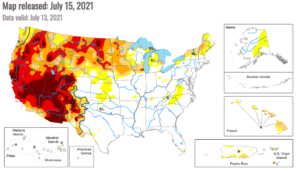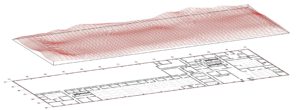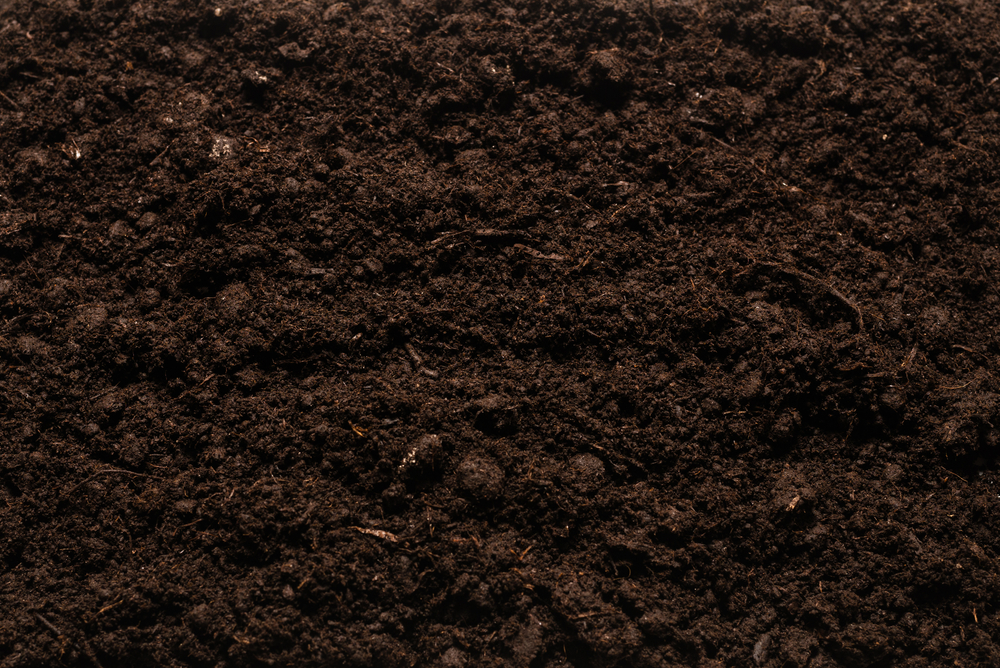For soils that experience volumetric change due to variations in moisture content, dry conditions can result in volumetric loss (i.e., “shrinkage”). Such soils are typically referred to as “expansive soils” because the potential for soil expansion (due to increases in moisture content) is typically more problematic for building foundations. However, these soils can shrink during dry periods or seasons, and such conditions are exacerbated during periods of drought. A commonly observed feature of soil shrinkage is visible cracking of the surface soils.
Figure 1 shows a map of the distribution of expansive soils in the United States. Expansive soil issues are most severe in areas where the climactic factors related to moisture are highly variable, such as areas with arid and semi-arid climates, which allow for cyclic variability in soil moisture contents during the year and during the life of a building. However, when areas that typically maintain a higher level of moisture experience drought conditions, the resulting shrinkage can have a significant effect on building foundations. Figure 2 shows a recent map of the drought conditions in the United States per the US Drought Monitor (https://droughtmonitor.unl.edu/). Several locations with soils that have the potential to shrink during dry periods are experiencing drought conditions.

Figure 1. Map of potentially expansive soils in the United States (U.S. Army Engineer Waterway Experiment Station, 1977, reprinted by Nelson and Miller, 1992)

Figure 2. Recent drought condition in the United States (U.S. Drought Monitor, 2021).
A foundation supports a building or other structure, and is the part of the building that directly interacts with the subgrade soils. While buildings with deep foundation systems are often resistant to the effects of soil shrinkage, those with shallow-bearing foundation systems may be susceptible to movement. If there are trees or other significant vegetation in close proximity to a building, this can exacerbate the effects of soil shrinkage, as the water demand from the vegetation will further decrease the moisture content in the soil around the root system.
Dry conditions and droughts can also cause potential problems for new buildings. If a building is being constructed on a site with expansive soils that are in a dry state, the addition of moisture after construction from irrigation systems or a cyclical period of wetter climate conditions can cause heave and foundation movement. Such conditions present a unique challenge for the design and construction teams working on the project.
Evaluation for foundation movement related to soil shrinkage can include an elevation survey of the foundation, similar to that shown in Figure 3, and mapping of distress within the building. If required, more detailed evaluations may include forensic testing of the site soils to determine the characteristics of the soils underlying the building foundation.

Figure 3. Relative Foundation Topography
Nelson’s experts have vast experience in evaluating soil-structure interaction problems and determining the extent and cause of any damage related to differential foundation movement caused by the shrinkage and expansion of susceptible soils. They are licensed in all 50 states and remain ready to respond to our clients’ needs nationwide. To request Nelson’s services, please call, e-mail expert@nelsonforensics.com, or submit an online request here https://www.nelsonforensics.com/request-forensic-services/.

